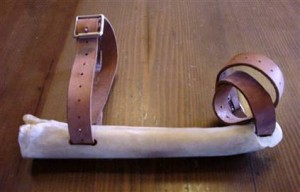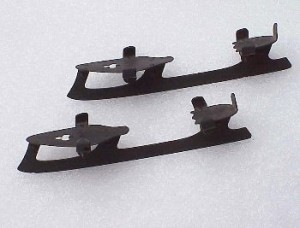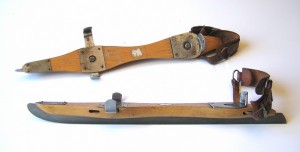History of Ice Skates
It can be found in art, a natural element depicted in many winter scenes. Ice skating is a favorite sport for many people, whether it be professionally in the rink or on a frozen lake in December. The sport takes many different forms, some of which are played at the Winter Olympics. Ice hockey is particularly popular at the Olympic Games.
The origin of ice skates dates back several thousand years, but the game of hockey didn’t originate until the 19th century. Mention of a game similar to the modern form that is recognized today was found in Nova Scotia, where it was played by the Micmac Indians. Different variations of the sport existed throughout time and in different countries, but they all had at least one thing in common- ice skates and a playing field made entirely of ice.
Ice skates have evolved greatly over the centuries as different inventors and skaters came up with revolutionary ideas which helped to influence the design for the modern metal-and-leather combination that is commonly in use today. As with many things originating in antiquity, ice skates were vastly different from today’s models.
It began with a pair of skates buried in the frigid waters of a lake in Switzerland, dated to be several thousand years old. The “blade” was merely a flattened runner made of bone and strapped with lengths of animal hide to the bottom of the shoe. The flattened bones were not as efficient for cutting into the ice; rather, skaters glided instead, propelled along with the use of long poles. In the 1500s, the bone runners were exchanged for strips of metal, which were studier and resulted in a smoother experience. The metal blade was double-edged and narrow, attaching to a flat wooden block. The poles were abandoned, as skaters could now push themselves along by simply pushing off with one foot while stepping with the other.
Ice hockey in its modern form originated in the nineteenth century in Nova Scotia, where Canadian students modified the field game of Hurley to a winter sport, exchanging the grassy field for a frozen pond. Ice skates were at first fashioned by local blacksmiths, each of whom had his own design. Thus, every skate was different from the next. Like the ancestral Dutch skates, these were also made using metal blades attached to wooden blocks, which were then strapped to the bottom of a boot.
A Pennsylvanian inventor named E.V. Bushnell in 1848 devised a clamping mechanism which clamped the blade to the bottom of the boot, rather than the previous method of tying it on. In the 1860’s, skater Jackson Haines created a blade made of two steel plates; the result was lighter and sharper, allowing for smoother skating. The 1870 addition of the toe pick, a series of angled jagged edges that tip the front of the blade, was added to Haines’ skate design, allowing for quick, high toe pick jumps.
John Forbes, a worker from the Starr Manufacturing Company, was a young Scottish immigrant with a knack at mechanicals, and he with his assistant Thomas Bateman set to work to invent a new design of skates which were safe and more efficient. In 1863, the two men invented a skate which attached the blade to the boot using a self-fastening lever, rendering the former straps unnecessary. Being much more secure and less likely to loosen, the new Starr “spring skates” quickly became popular among skaters in Nova Scotia, and Starr’s position as a major producer of ice skates was assured for years to come. John Strauss added his own changes in 1914, creating the first closed toe blade from a single piece of metal, making the ice skates still lighter and stronger.
The boot itself also underwent many changes, both in materials and in design. In the beginning, boots were made from leather and reached up the calf. Robert Henderson modified this so that it cut just above the ankles, allowing more freedom of movement. Different materials were tried as companies searched for the best combination of safety, speed, comfort, and mobility.
The design of the skate varies depending on the intended use. Figure skates tend to have a thinner blade to allow for delicate maneuvering, but hockey skates require a blade that is thick enough to endure the tough sport. The blade is also shaped differently in that it is more curved and minus the toe pick to prevent injury to other players.



Comments are closed.